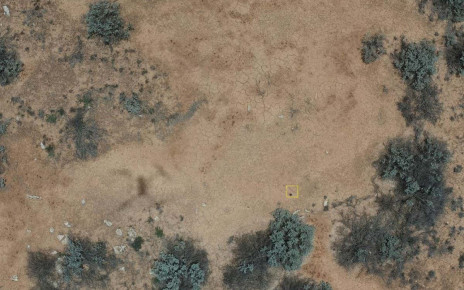[ad_1]
Vast mounds of sponges stretching for hundreds of metres have been discovered 600 metres down near the Channel Islands off California
Environment
3 March 2022
Vast mounds made of the skeletons of glass sponges have been discovered 600 metres down on the seabed of the Channel Islands National Marine Sanctuary off California. The mounds are unlike anything found before in the area and could be examples of a very rare kind of habitat known as a sponge reef.
The reef-like mounds were first spotted by researchers in 2020, during a dive by a remotely operated vehicle (ROV) from the research ship EV Nautilus.
“We started seeing patches of dead sponges,” said Abigail Powell, a contractor for the US National Oceanic and Atmospheric Administration, during a virtual talk at the Ocean Sciences Meeting 2022. “It just got denser and denser, and soon we were climbing over great mounds of it.”
The area is relatively well explored, so the discovery was a surprise. “There have been many dives here over the years, but never over this particular track,” said Powell.
The mounds consist mainly of the silica skeletons of dead glass sponges, turned brownish by a coating of sediment. However, there are many other species living on and in the mounds, including fish, clams and sponges of both the reef-building and non-reef-building kinds.
In 2021, the ship returned to the sponge mound site and an ROV zigzagged over two of the mounds. This revealed that the largest mound was more than a kilometre long, 500 metres wide and at least several metres thick in some places.
“The continuous extent of the patches over hundreds of metres is unlike anything we have encountered before,” Powell said.
A funnel-shaped sponge (Heterochone calyx) growing on top of the sponge mounds NOAA fisheries/NWFSC
Sponge reefs were common during the time of the dinosaurs, but were thought to have vanished completely from modern oceans. Then in the 1980s, living sponge reefs were found off the coast of British Columbia in Canada, and a few others have been found elsewhere.
“Glass sponge reefs are spectacular, but fragile, ecosystems,” said Powell.
However, she is hesitant about calling the mounds off California sponge reefs until acoustic scans reveal their deeper structure.
“We need to find out whether the mounds are composed of sponge skeletons or whether we are looking at a relatively thin layer of sponge growing on rocky ridges,” Powell told New Scientist.
“I think ‘reef-like’ would be a good way to describe what we found until we know more.”
What is clear is that the proportion of living reef-building sponges on the surface of the mounds is much lower than on the reefs off Canada.
It isn’t known whether this is a natural phenomenon explained by local environmental differences between the two sites, or whether something has killed a lot of the reef-building sponges in the Channel Islands National Marine Sanctuary.
“There are still many unanswered questions,” said Powell.
While trawling is allowed in parts of the sanctuary, the sponge mounds are in a no-take zone and so should be protected from all types of fishing.
More on these topics:
[ad_2]
Source link




